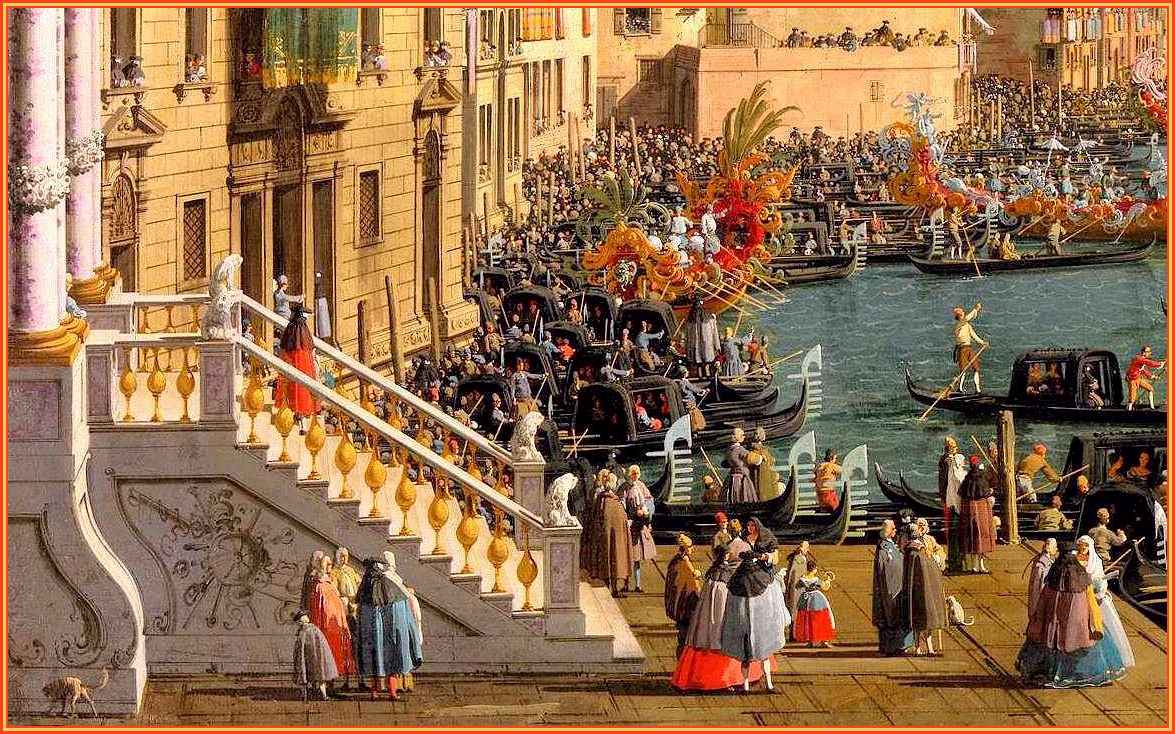 |
|
ANTONIO VIVALDI (1678-1741) La Cetra, Opus 9, Book One
ANTONIO VIVALDI, La Cetra Book I:
WILLIAM BOYCE: (1711-1779) |
ANTONIO VIVALDI (1678-1741) La Cetra, Opus 9, Book Two
ANTONIO VIVALDI, La Cetra Book II:
ENRICO ALBICASTRO (c1670-c1738)
Carl Pini and John Tunnell, violins; |
Dedicated to Austrian Emperor Charles VI, this set of twelve concertos, which Vivaldi entitled La Cetra (The Lyre), was published in two books of six in 1728 by the Amsterdam publisher Le Cène as Opus 9. Peter Ryom, editor of the Vivaldi Collected Works (RV numbers) has observed:
"Musically speaking, Vivaldi's Opus 9 is one of the finest and most interesting collections he has left us. Above all, it is an unequivocal reflection of the evolution his style underwent during the years separating it from the first collection of concertos, the famous Opus 3 entitled L'Estro Armonico. Although the latter, dating from 1711, already includes concertos for a solo instrument, the pieces assembled are principally works rooted in the old concerto grosso style with two or more soloists. Despite the undeniable musical quality of Opus 3, the concertos are frankly less sophisticated, especially in matters of form. "In Opus 9, on the other hand, we find the full development of the "classic" Vivaldian concerto style, that style made up of elements characteristic of most of his instrumental works, developed gradually from Opus 4 onwards: the tripartite concerto-form, the finely balanced alternation of tutti and soli on which the fast movements are built, the often contemplative character of the slow movements, the harmonic and rhythmic structure of the themes, etc. "For all that, and notwithstanding the presence in these twelve concertos of countless typically Vivaldian characteristics, the compositions are far from uniform. On the contrary, each one of them strives to display their composer's diversity of expressive means and astonishing richness of invention. From this point of view, too, Vivaldi's Opus 9 is a significant work." The two Concerti Grossi by William Boyce on this CD should not be confused with the Symphonies, some of which can be heard on BMC 6. Boyce's Symphonies are all late works, while these Concerti Grossi are much earlier. Whereas the Symphonies betray a definite leaning towards the roccoco style, these Concerti Grossi are pure baroque. Vincent Novello, who owned the score of the b-minor concerto, presented it to the British Museum in August, 1849, with a note to the effect that his gift was made "as a tribute of respect to the memory of Dr Boyce, who in my estimation, for purity of melody, solidity of harmony, and skillful refinement in the construction of his sterling counterpoint, was one of the very best composers of the genuine English school." As a performer, Enrico Albicastro must have possessed an unusually good violin technique, for the concertos contain numerous examples of exceptionally tricky and brilliant figurations for the first violins. As a contrapuntalist, his allegiance leans more toward the Germans than to the classical Italian school of Corelli and Torelli, and it is significant that Quantz greatly prized his music (together with that of Biber and Walther) in the early and formative part of his career. Albicastro's harmony has been compared for its unusual richness and bold progressions to the organ fantasias of Bach, and it is possible that the keyboard played as important a part as the violin in the early shaping of these concertos, which were published in the customary set of twelve by Roger of Amsterdam about the year 1703. They are not concerti grossi, but rather orchestral concertos in which dynamic and other contrasts are achieved by means of controlled tone and tempo instead of the deliberate inequality of concertino and tutti. We are rather pleased to include this hitherto unknown composer in our catalogue, thanks to the tireless research of the late Denis Stevens.
|